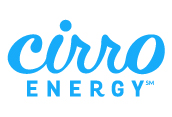


4 Ways To Prevent Power Surges and Keep Your Holiday Lights Shining Bright



What’s a Power Surge?
A power surge is a brief, abrupt increase in electrical voltage in a circuit that can vary in length and strength. Surges can be caused by lightning strikes, electrical faults and cycling large appliances.
In the United States, 120 volts is the typical voltage level for household appliances. While there is no fixed threshold that defines a surge, they often take place when there is a significant increase in voltage above the standard level over a brief period. This increase can be caused by a sudden change in power demand.
As the excitement of the holiday season fills the air, it’s easy to give way to temptation and want to fill every electrical outlet with décor. Here are a few reasons why you should think twice.
Sparks May Fly
Too many lights connected to a single electrical circuit can cause excessive loading, leading to surges. These surges can damage your lights and other connected devices.
Although there’s a strong inclination to pull out an extension cord and start plugging away, don’t. You’ll want to first ensure that the cord you’re using has been rated for the wattage of your lights. To avoid a potential fire, try not to overload your power strip or plug multiple cords together. When too many electrical devices are connected, it can also cause a power overload. Instead, unplug energy-draining appliances when they’re not in use. And remember to use surge protectors.
Keep It Concealed
It’s highly likely that the outdoor lights that you’ve draped around your home so festively will be subjected to some harsh temperatures. These conditions can lead to water damage and shorting out your circuits. Protect your lights by keeping them in areas that aren’t as heavily affected by water. Once you’ve chosen the right extension cord for your wattage, remember that the longer, heavy-duty ones will be able to withstand varying weather conditions. Opting for several short extension cords creates more connections and increases the chance of moisture seeping in, so you’ll want to avoid doing so. To be on the safe side, be sure to weatherproof your electrical connection point by doing one of the following: covering them with tape, using a weatherproof gasket or using a box cover.
Mute the Noise
Older models of holiday lights can create electrical noise and interfere with the power line. This type of electrical noise can affect the quality of your power and disrupt electronic devices.
Here are a few things you can do to avoid this problem:
- Replace incandescent lights with LEDs.
- Use shielded cables to keep noise contained.
- Keep them away from other devices by plugging them into a separate electrical circuit.
Surge Into Safety
Luckily, there is a way to help protect your home appliances in the event that they are damaged by the effects of power surges. You can add a Cirro Surge Protect plan, provided by Allied Warranty, to your monthly electricity plan. For only $6.99 a month, you’ll be covered for any appliances and electronics that have been damaged by lightning or power surges. It’s a good way to safeguard your home and have peace of mind not only for the holidays but also all year long.
Don’t let power surges steal the shine from your light show. Get ahead of them by fighting the temptation to overload your circuits. Inspecting your lights for damage and using surge protectors to serve as a buffer between your lights and energy supply is essential to preventing circuit overloads. And finally, for that added sense of security, consider signing up for Surge Protect.
